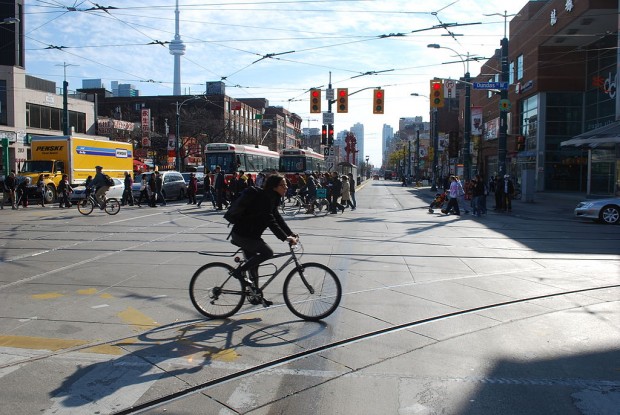


While Toronto has made steps towards having more bike lanes and bike infrastructure, former mayor David Miller is among those who say more could be done to accommodate cyclists.
Miller stopped by the Humber College Lakeshore campus to speak to journalism students on Tuesday. He shared that he is currently refraining from cycling on roads in the city after colliding with a car two weeks ago near Dufferin and Dundas street West.
“If you’re on the roads it’s dangerous. We need a network around the city that’s safe and you’re not riding in this traffic and you have your own lanes,” Miller said.
“The last three years, very little has happened. I’m really worried. Compared to when I moved to Toronto, there’s an exponentially larger group of people cycling. The city is not taking it seriously enough.”
Jared Kolb is the executive director of Cycle Toronto, a cyclist advocacy group, and he agrees there currently isn’t enough infrastructure in place to accommodate people who prefer to commute via bicycles.
“We have five thousand kilometers of roadways in the city and only a hundred kilometers of bike paths in the city,” said Kolb.
“When you run the math, only 2 per cent of the city’s roadways have designated bike paths.”
In addition to bike lanes, Kolb says that intersection infrastructure is also important to consider when thinking about how the city could be more bike-friendly. He says bike boxes like the one at Harbord and Spadina are great because they allows cyclists to get ahead of other road vehicles at a traffic light.
Dave Hunter from the Transportation division of Toronto’s city planning department agrees with Kolb and Miller that more needs to be done.
“Our goal is to provide that network but we need funding, public support and political support,” said Hunter.
Kolb says that Cycle TO has a grassroots program focused on starting smaller cyclist advocacy groups in different wards in the city.
“What this effectively does is that it brings cyclists together, gives them a voice, and puts more pressure on their local councilor,” Kolb says. “Those councilors become more conscious to these issues and their bike friendliness when it comes to voting.
Cycle TO currently has 20 ward groups. Because it takes 23 votes in city council to pass a motion, Kolb says they will have more then 23 groups by next year.
Daniel Egan is the manager of pedestrian and cycling infrastructure of City of Toronto Transportation Services. He adds that there are more factors to consider beyond what is being done by the city.
“Safety not only depends on the infrastructure but it also depends on the people on the roads,” said Egan.








